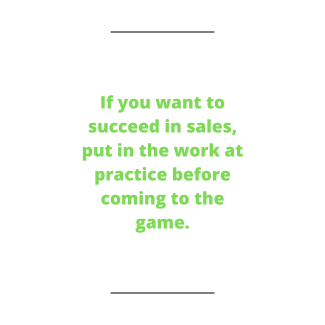(Editor’s Note: PPAI Media’s new “Voices” series introduces the opinions and advice of promo industry influencers on a variety of topics for which they specialize. The opinions and ideas belong to the individual writer and may not represent those of PPAI or their respective employer.)
When PPAI Media asked me to write for them in the new Voices series, sharing my perspective, experience and opinion on business growth and personal development, I was honored and curious at the same time.
Not having been in the editorial world before, I wondered what drew their attention to me? How do these decisions get made? When I asked my editor, I found out that the process involved a group of people within the Association who identified goals for this new program, researched potential writers, and suggested and select candidates that fit best.
In essence, they prospected. So, I thought, what a great topic to start with: Let’s talk about prospecting. It’s absolutely essential in sales to spend most of your time with contacts who are highly likely to buy from you or become long-term partners. And it’s not only that way in promo.
Before I was introduced to the world of promotional and corporate apparel, I was in the fitness industry. I learned early that the same sales approach does not fit all situations and all customers. It was clear to me that before I had a chance to sell someone a membership, fitness program or supplements, I first needed to find out if they were serious about getting in shape, or if they would be giving up on their New Year’s resolution in February.
How did I do that? I prospected.

If you think you’re selling, but you haven’t prospected, you’re not selling. Many confuse selling as the routine of showing up with a product in hand, talking within the allotted time, driving to the next appointment and waiting for the customers’ orders. But selling starts with prospecting.
It begins with gathering knowledge, followed by identifying a purpose, and only then a conversation. It position you or your brand as a solution. It qualifies the prospect; are they in or out? This process identifies and communicates if you’re a fit for your customer at that time (and yes, you should prospect with active, loyal customers, too).
If you don’t do your job prospecting, you’re not only wasting your time, you’re also wasting your customers’ time. The practice of prospecting creates discipline and forces you to hold yourself accountable for your time. Without proper prospecting, I’ve seen too many salespeople become professional visitors, bouncing around hoping to show up at just the right moment.
In a highly competitive world, the lack of prospecting is like playing the game without showing up at practice.
So, what does strong prospecting look like? Five things come to mind.
- Define your ideal customer. It sounds simple, but this is frequently overlooked and I often hear “all customers are my ideal customer.” This fear of commitment leads to a lack of definition of the value you bring to your customers. Identifying an ideal customer profile also to help your customer understand why you’re a good fit for them.
- Know your customer, prospect or lead. When you don’t do your research, you lose out on revenue. You end up nurturing the wrong relationships, engaging at the wrong time and missing the right times. How do you avoid it? Take the initiative to familiarize yourself with who they are through readily available information about their company and their values, likely available through their website or social media.
- Know your goals. There’s no point in spending time to engage if you don’t even know what you’re engaging to achieve. Define your goals before you start prospecting; you’ll save yourself time and effort by being better prepared when you engage.
- Know your product. The best salespeople know their product and their competitors’ product inside and out. If you’re not well versed on your offering, how can you build trust with your prospect?
- Evaluate results. After interaction with a lead or active client, you need to step back before you re-engage and ask yourself what do I want out of this? This establishes a communication hook and defines why you’re there and your next goal. After the conversation, also assess what went right and what went wrong.

Obviously, there’s no one-size-fits-all in sales. We all have a variety of experiences, different products and business objectives. However, I can assure you that through my time in sales, whether it was as a fitness coach, supplier rep, distributor business development manager, or now as a VP of sales in a growing startup; the common thread to success is knowing the value you bring to your customer even before they become your customer.
Through prospecting, you’ve already created value for your potential customer: You have come to the table with purpose and knowledge. If you want to succeed in sales, put in the work at practice before coming to the game.
Quaranta is the vice president of sales and business innovation at supplier KNOSS Apparel. She made her debut on the PPAI #Online18 list of the industry’s best follows on social media in 2023.


